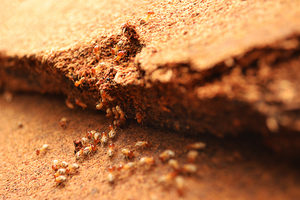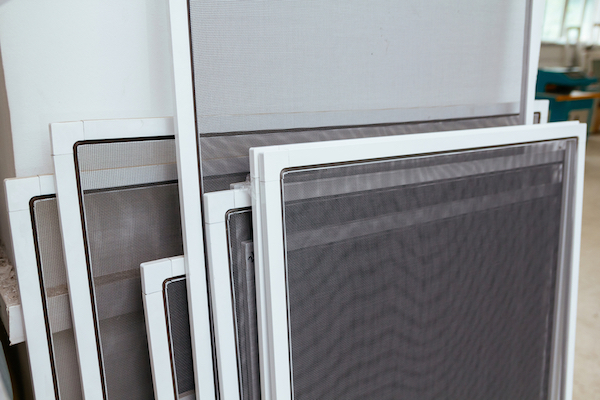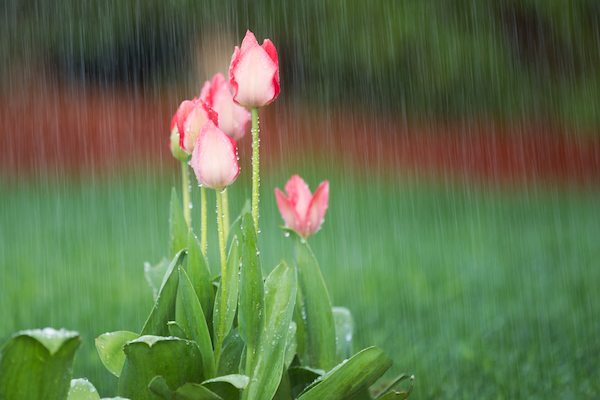After a cold and snowy winter, all of Michigan celebrates the arrival of spring. Here in the lower peninsula of Michigan, springtime is one of the most beautiful times of the year. The Crocuses, Daffodils and Tulips are starting to peek up out of the earth, soon to show their brilliant colors. Along with routine spring cleaning, focus on the areas below to prevent pests from getting inside. Griffin Pest is committed to bringing our community prevention tips to keep pests away before they ever become a problem. For information on pests that are common in our area, look at our Pest Identification Library.
Pests Inside
- Kitchen – Prevent ants and cockroaches by cleaning your kitchen surfaces regularly, as well as appliances such as toasters and grills. Clean out your pantries, an unkempt pantry is like a buffet line. Clean your fridge, and cabinets by removing expired and unwanted items. Scrub your drawers with bleach or kitchen cleaner, and afterward, sweep and mop your floor. Even random crumbs can be enough to create the need for pest control.
- Bathroom – Moisture in your bathrooms can attract cockroaches and silverfish. Regularly wash shower curtains, dry bathroom surfaces, and clean out drawers and cabinets. Pests may enter through window sills, and drains. Check screens and any gaps around window sills. Pour bleach down drains as pests may come up your drains. Check pipes under the sink for any leaks, as water attracts pests.
- Basement – In your basement insects thrive in the dark, and out of sight. The dark allows them to avoid predators when they search for food, which is often at night. They hide in crevices, which is why they are less likely to be seen until it’s too late – especially in an unfinished basement.
- Declutter – Remove clutter inside your home, basement, garage and sheds. Storage spaces are ideal for spiders, cockroaches and rodents as they are often dark and filled with lots of clutter. These conditions are perfect for breeding and hiding.
Pests Outside
- Home Exterior – Look for cracks and holes in the foundation or openings around windows. Ant problems can usually be traced to tiny fissures around windows. Remember, insects must enter your home before they can pose a real pest control problem. Ants are especially diligent about locating new entry points. Seal any cracks you find and repair or replace screens in windows. By eliminating any openings in your home’s periphery, you’re taking the first step in pest control.
- Trash Cans – Trash cans are an area that commonly hold food and will act as a magnet for pests. The trash can is a common weak point in pest prevention and control. Store your cans away from the house if possible. Ensure your trash cans have a tight-fitting lid and are lined with trash bags.
- Firewood – Store firewood away from your home and off the ground, if possible. Piles of firewood are attractive to pests such as termites. A stack of firewood acts as both shelter and a food supply. To keep pulp-eating pests out of your home, move your firewood pile away from any buildings.
- Garden Maintenance – Try reducing pests from entering your home by placing plants away from your home’s structure. Many residential pests are fully capable of surviving in nature as well as inside your home. Maintaining a clear, plant-free zone around your home is an excellent habit for pest prevention and control.
- Remove Water Sources – Removing water sources will have a great reward in the reduction of mosquito breeding. People often ask how they can get rid of the mosquitoes that are in their yards, patio, or area around their homes. The ideal approach for controlling mosquitoes is to never let the population explode in the first place. You can do this by making your entire yard less attractive to mosquitoes.
- Be sure to eliminate (or treat) any of these breeding grounds in your yard.
- Lawn or yard ornaments with standing water features
- Buckets that accumulate rainwater or runoff
- Puddles
- Landscape ponds
- Bird baths
- Ruts that hold standing water
- Clogged gutters and downspouts
- Plant bowls saucers
- Other items that can collect rainwater or runoff – such as a wheelbarrow that is not turned upside down
Spring Pest Prevention and Control
If you have or suspect a pest problem or would like to know more about protecting your home and yards, call our team of experts at Griffin Pest Solutions. Our team is innovative, reliable, and ready to meet you and your property in whatever you might need. Above all, Griffin Pest Solutions has 90 years of experience. Call us today for your free quote!



 Even if you don’t know
Even if you don’t know  Like stink bugs, boxelder bugs never
Like stink bugs, boxelder bugs never  When boxelder bugs re-emerge from the overwintering sites, their top priority is food. Remaining inactive for long periods is very taxing to boxelder bugs, so they need to recharge quickly. During this period, adult boxelders are usually encountered on the ground, where they eat low vegetation and fallen seeds. Boxelders seek out female
When boxelder bugs re-emerge from the overwintering sites, their top priority is food. Remaining inactive for long periods is very taxing to boxelder bugs, so they need to recharge quickly. During this period, adult boxelders are usually encountered on the ground, where they eat low vegetation and fallen seeds. Boxelders seek out female  The most important thing to remember about boxelders control is that when they die, their bodies attract other pests. Don’t kill the boxelders you encounter in your home, especially if they’re in your walls. Instead, vacuum or sweep up the boxelders you encounter and dispose of them outdoors. You could also use soapy water to kill the boxelders, as long as you remove the bodies after they die. Scrub down any areas where boxelders congregated with soapy water, too.
The most important thing to remember about boxelders control is that when they die, their bodies attract other pests. Don’t kill the boxelders you encounter in your home, especially if they’re in your walls. Instead, vacuum or sweep up the boxelders you encounter and dispose of them outdoors. You could also use soapy water to kill the boxelders, as long as you remove the bodies after they die. Scrub down any areas where boxelders congregated with soapy water, too.
 Starting in early fall, boxelder bugs go looking for dry, warm places where they can wait out the winter. Unfortunately, those dry, warm places often include our homes. When spring comes around,
Starting in early fall, boxelder bugs go looking for dry, warm places where they can wait out the winter. Unfortunately, those dry, warm places often include our homes. When spring comes around,  Stink bugs follow a similar seasonal routine to boxelder bugs, and they’re around for the same reasons. During fall, they desperately seek out any warm place where they can
Stink bugs follow a similar seasonal routine to boxelder bugs, and they’re around for the same reasons. During fall, they desperately seek out any warm place where they can  During spring, the infamous wood-infesters
During spring, the infamous wood-infesters  Unfortunately, carpenter ants aren’t the only ants reproducing and foraging in the spring and summer. In late spring, the brief but very active
Unfortunately, carpenter ants aren’t the only ants reproducing and foraging in the spring and summer. In late spring, the brief but very active 
 Cockroaches
Cockroaches
 For most pests, heavy rainfall is a nuisance. While it can be a nuisance for
For most pests, heavy rainfall is a nuisance. While it can be a nuisance for  Everyone knows
Everyone knows 








